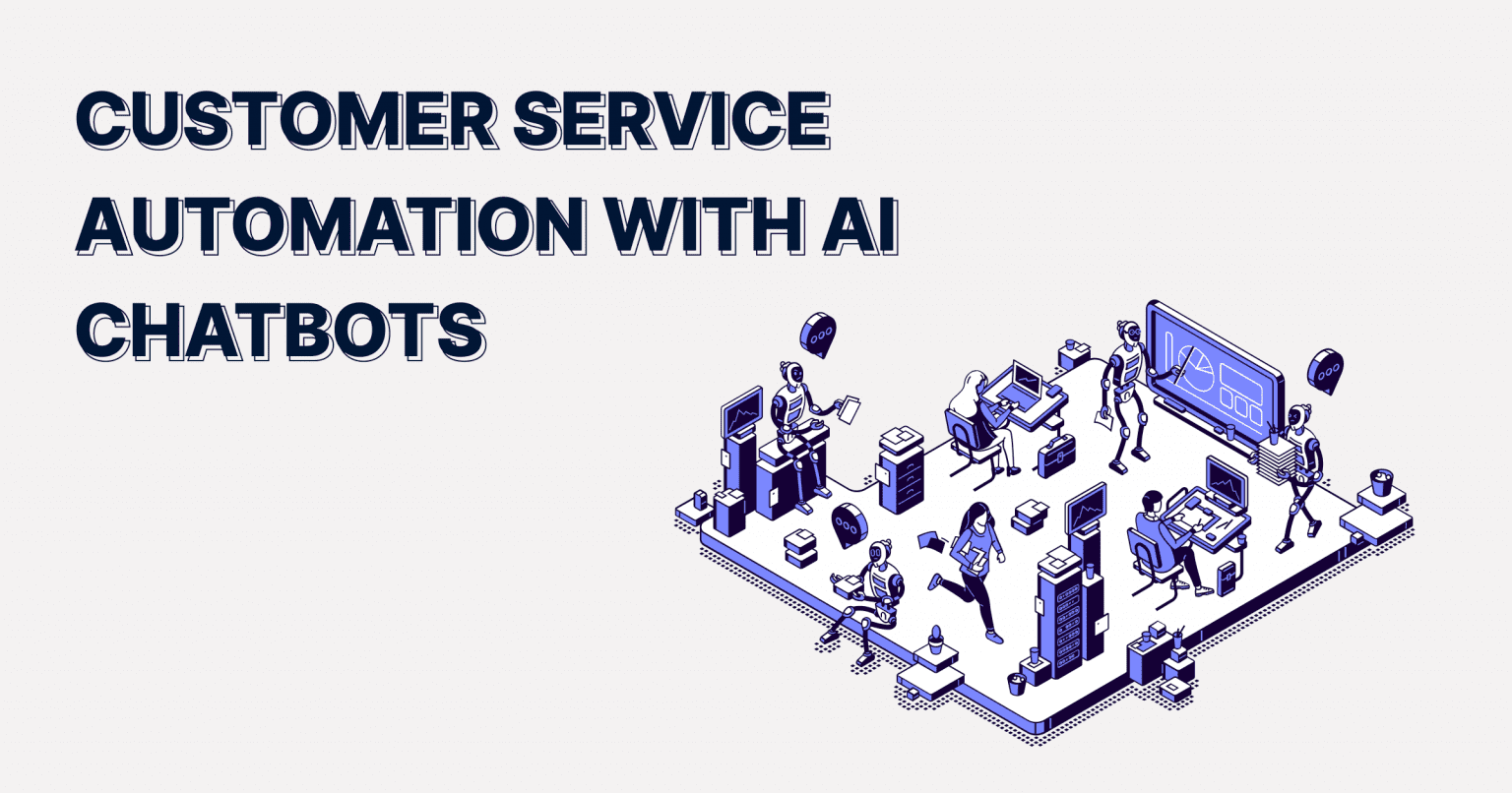
Photo by Kampus Production
With the use of artificial intelligence (AI) on the rise, it is no surprise business owners are looking for ways to automate the multi-billion-dollar industry of customer service. The support industry is expected to grow to over $58 billion in 2030.
Today, AI is being used to answer simple questions, collect customer data, prioritize tickets, and more. Some companies are also integrating AI with voice assistants and augmented reality, providing 24/7 customer service without the need for employees to work the graveyard shift.
As AI chatbots handle inquiries round-the-clock, businesses gain invaluable insights into customer needs, behavior patterns, and frequently asked questions. Analyzing this data in real-time empowers companies to address customer concerns promptly, along with enhancing satisfaction levels and fostering long-term loyalty.
Moreover, AI chatbots overcome the limitations of human support, as they can efficiently handle a high volume of inquiries without fatigue or downtime.
In this article, we will discuss how AI chatbots can provide your business with simplified, customizable, and automated customer support.
What are AI Chatbots?
AI chatbots are computer programs designed to simulate conversation with human users, typically through text or voice interfaces. These chatbots utilize artificial intelligence techniques, such as natural language processing (NLP) and machine learning, to understand and respond to user inputs in a conversational manner.
Unlike traditional customer service methods, AI chatbots operate 24/7, ensuring continuous support availability regardless of time zones or geographic locations.
This allows your company to efficiently and effectively cater to the needs of your global customer base, enhancing overall customer satisfaction and loyalty.
Furthermore, AI chatbots offer scalability and cost-efficiency. As your business grows and you get more inquiries from customers, AI chatbots can handle the increasing volume of interactions without the need for proportional increases in human resources or costs.
This scalability helps companies provide high-quality customer support even during periods of rapid growth or peak demand without straining their budget.
How Can I Implement 24/7 Customer Service Automation with AI Chatbots?
Here are some ways you can implement customer service automation with AI Chatbots to provide your customers with 24/7 support:
Integrate Chatbots With Existing Platforms And Systems
Whenever you implement a new system into your processes, the best way to move forward is to prevent data loss and make it easier for your team to get on board.
Integration ensures that the chatbots can access relevant customer data and interact with other tools your business uses, such as CRM software or helpdesk systems.
At the same time, integrating chatbots with existing platforms allows for smoother workflow automation, streamlining processes, and improving overall operational efficiency.
To make sure the integration is a success, work closely with your IT team or software providers to ensure compatibility and optimize the performance of the chatbots within your existing infrastructure.
Customize Chatbots For Your Industries Or Businesses
Each industry and business has unique requirements and customer expectations, and tailoring chatbots to meet these specific needs enhances the effectiveness and relevance of the support your customers receive. When customizing chatbots, you need to consider factors such as industry-specific terminology, common customer queries, and preferred communication channels.
For example, if your chatbots need to help a person interested in auto loans, they need to be trained on terms such as “chattel,” “60 months to pay”, or “all-in downpayment” to be able to assist customers effectively. Another case is when your chatbots help customers with college education programs, they can help potential students better if they know the difference between “quarter credits”, “semester hours”, and “credit hours”.
Moreover, focus on developing conversational flows and responses that reflect your brand voice and values, fostering a consistent and engaging customer experience. Regularly monitor and analyze chatbot interactions to identify areas for improvement and adjust customization accordingly.

Train And Optimize Your Chatbots For Efficiency And Accuracy
Start by providing comprehensive training data to the chatbots, including a wide range of possible customer queries and responses. A diverse dataset can help the chatbots learn to understand and respond accurately to the different types of inquiries your customers often request. You should also continually refine and update the training data to reflect changes in customer behavior, industry trends, and product offerings.
Machine learning algorithms can also continuously be used to improve the performance of your chatbots over time. These algorithms analyze interactions between customers and chatbots to identify patterns and trends, allowing chatbots to adapt and evolve their responses accordingly. You will need to regularly review chatbot performance metrics, such as response accuracy rates and customer satisfaction scores, to identify areas for optimization.
Manage Challenges And Risks
Effectively managing challenges and risks is paramount when implementing AI chatbots for 24/7 support to uphold customer trust and satisfaction. Here are some tips on how to manage risks:
- Prioritize privacy and security by implementing strong encryption methods and regularly updating security protocols to safeguard customer data.
- Establish a system for smoothly transitioning complex queries and unique cases to human agents to ensure personalized assistance and accurate solutions.
- Continuously train and refine chatbots to handle a wider range of inquiries effectively, improving their efficiency and accuracy over time.
Features To Look For in AI Chatbots for Customer Service
Before you commit to the best help desk software or any AI chatbot for your customer service needs, make sure to check if it has the following features:
Natural Language Processing Capabilities
Ensure that the AI chatbot can understand and interpret natural language, allowing it to engage in more human-like conversations with customers and comprehend their inquiries accurately. This capability enhances the user experience by enabling customers to interact with the chatbot in a more conversational manner, leading to quicker issue resolution.
Multi-Channel Support (Website, Mobile App, Social Media, Etc.)
Look for a chatbot that can seamlessly operate across various communication channels, including websites, mobile apps, and social media platforms, to provide consistent and accessible support regardless of the customer’s preferred channel. This versatility ensures that customers can reach out for assistance through their preferred platform, enhancing convenience and accessibility.
Seamless Escalation To Human Agents When Necessary
Check if the chatbot can smoothly transfer complex queries or situations that require human intervention to live agents. This feature ensures that customers receive personalized assistance when needed, maintaining a high level of service quality and satisfaction. Additionally, it enables businesses to provide a human touch in critical situations, building trust and rapport with customers.
How To Measure Success and ROI
To measure the success and ROI of implementing AI chatbots for customer service, you will need to focus on key performance indicators (KPIs) like response time, resolution rate, and customer satisfaction scores. These metrics offer valuable insights into how effectively AI chatbots address customer inquiries and issues, helping businesses gauge their performance and impact on enhancing customer experiences and operational efficiency.
At the same time, calculating ROI entails comparing the cost savings and efficiency gains from AI chatbots against the initial investment. This comprehensive evaluation enables businesses to assess the tangible benefits and value of integrating AI chatbots into their customer service operations.
Here are some tips on how you can measure KPIs and ROI:
- Benchmark KPIs against industry standards or competitors for context, such as determining the percentage of queries suitable for chatbot assistance.
- Calculate return on investment (ROI) by comparing the cost of implementing AI chatbots against the benefits gained, such as cost savings or revenue increase.
- Consider both quantitative and qualitative factors when evaluating ROI, including customer satisfaction and employee productivity.
- Estimate the time saved by agents due to chatbot assistance.
Automate Your Support Services Today
The integration of AI chatbots for 24/7 customer support offers numerous benefits for businesses seeking to enhance their service capabilities. By investing in AI chatbots, companies can streamline their support operations, boost productivity, and deliver exceptional experiences to their customers. As we move forward into the future of customer service, the role of AI will continue to expand, revolutionizing the way businesses interact with their clientele and setting new standards for service excellence in the digital age.





